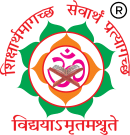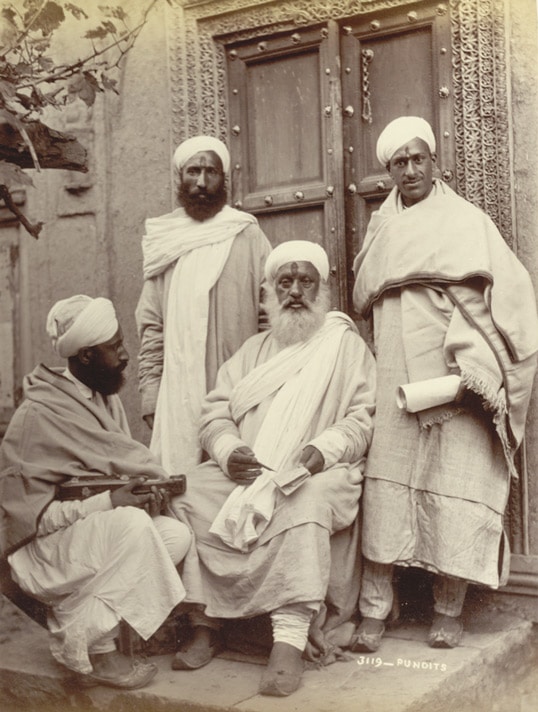Many occurrences have taken the global stage by storm in the last couple of months. Be it the relentless attack of the Russians on Ukraine under their President Vladimir Putin, the unprecedented rise of crude oil prices or the cataclysmic fall of global markets. Well for a change COVID-19 seems to have taken a backstage with the proven lack of virulency of its latest variant ‘Omicron’. However, a small movie made with not much of a promotion, minuscule budget and proven veteran actors has become a talking point for the whole nation. Indians have been shaken, enlightened and more by this movie which has come out of the blue depicting the hard red facts of our history – The Kashmir Files. Whether it was just forgotten or consciously ignored is what will be unravelled through this series of editorials to follow.
A valley of ‘Hindu’ significance
How many of them in this millennial or even a couple of generations before would know that this northern most state of Kashmir is referred to as the seat of spiritual knowledge or Jnana? Goddess Saraswati who stands for knowledge is also referred to as ‘Kashmiri’. The great sage Kashyapa whose lineage (Gotra) from which a huge population of Hindu’s hail from also has its origin from this valley state. The divine guru Sri Adi Shankaracharya has spent a considerable amount of his life time with immense spiritual significance at this seat of knowledge and hence there is the ‘Shankaracharya Hill’ – a
sacred place for the Hindu’s once upon a time. We could delve in much deeper depths to unravel unprecedented levels of connection this land has for Hindus.
Article 370/371 and the conspiracy
It dates back to 1949 during the times of Dr.Ambedkar who was responsible for drafting the constitution, Rajendra Prasad was the President of the constituent assembly and Sardar Patel being the Chairman of the fundamental rights committee. With heightened discussions at the United Nations on Kashmir, Jawaharlal Nehru had requested Sheikh Abdullah to speak to Ambedkar and insisted a resolution in either of the two ways: (i) Kashmir as not a part of India (or) (ii) Kashmir to be a land of dispute, the resolution of which alone would determine its status after which it would be added to the list of Indian states. On hearing this request, Ambedkar vehemently opposed this suggestion and this is exactly what he exclaimed – “I would be a traitor if I passed this resolution and in the case of being forced to do it, I will not hesitate to completely quit either”. Based on this stance, Nehru now took the matters to Sardar Patel to further intervene and asked Ambedkar to stay away while this resolution was being passed. What an irony it was that the stalwart, responsible for uniting thousands of provinces into the states of India, was asked to persuade the father of our Indian constitution to pass such a resolution. Patel’s persuasion was based on the fact that this resolution was temporary in nature and to be in place until the overall UN resolution was passed. Subsequently, that Article 370 would be wiped out. The United Nations had laid three specific conditions to Pakistan, the primal and most important one of which was: ‘Pakistan should not be the aggressor it is and immediately withdraw its troupes from valley state of Kashmir’. The fact remains that this has never happened until today and thus least be discussed about the other two conditions to be implemented if the above was fulfilled by Pakistan. Truth be told, Shri Gopal Swamy Iyengar was hence roped in to have this resolution who ended up successful in this endeavour. As we look back at the history with this background, it feels clueless as to when was Kashmir a separate legal entity? Clearly it brings to light the ‘conspiring’ circumstances under which the root cause of the still plaguing issue of Jammu & Kashmir (J&K), the Article 370 was passed. In my view, the clan of spineless Congressmen who have unfortunately enjoyed power over the last 50+ years have sown the seeds for all that this great country ‘Bharath’ is unfortunately bleeding till today. From history we also learn that there was a huge uproar when this resolution was passed. Also, this dreaded Article 370, as per the resolution, could be just deleted by the President of India provided the go-ahead of the J&K constituent assembly. However, fate had its final say that this discretionary power too never been exercised till today.
Those peaceful years in this ‘beautiful’ valley
For over two decades in the 1970’s and almost the whole of 1980’s, Kashmir was by and large serene and peaceful. With abundance of beauty laden all over these years marked widespread tourism and were truly last seen years of development in the valley. Another important reason for the prevailing peace was that the militant Muslim community who overestimated considering themselves ‘far superior’ to the Hindus were quite demoralized. Some of the key reasons for this were:
(i) The enormous routing of the Pakistani soldiers in the hands of our army,
(ii) A massive arrest of over 100,000 soldiers in the Bangladesh war.
Most importantly, there was never a talk of separate Kashmir during these years except by a few inconsequential Congressmen, liberals etc.
The ‘four’ formative years before the actual storm: 1988 – 1992
It all started in 1988, when Farooq Abdullah (not sure in what mind he was) released all the Pakistani terrorists who were caught and put into the J&K jail. These criminals were now freely wandering among the common public. The following years 1989/90 saw the worst turn of events with multiple individual assassinations of judges, government servants and professors started to take place. Sadly, rapes too started to increase exponentially. In the same year of 1989, VP Singh formed his government with a three-legged coalition between BJP, the CPI & CPM ably supported by Atal Behari Vajpayee. It was in this cabinet that Mufti Mohammad Syed was the country’s Home Minister. The man was responsible for one of the biggest blunders of the time – release of 8 of the ‘most’ notorious terrorists (who were arrested in the central jails) in exchange for the Rubaya Syed who was kidnapped by J&K Liberation Front (JKLF). The VP Singh government had become quite unpopular by then and as strongly directed by Rajiv Gandhi was toppled in 1991 to be replaced by Chandrasekhar as the PM and Devi Lal as the deputy PM aided by the mastermind of Dr Subramaniam Swamy. However kidnappings continued with the next victim now being Nahida Imitiaz the daughter of Saifuddin Soz. He was a member of the Sheikh Abdullah party and a member of parliament (MP) in J&K. The youth wing of the JKLF took responsibility for this. The newly formed government took an out of the box approach to this problem by consulting Israel for help. Our RAW agents and Special Task Force (STF) met the exiled JKLF VP, General Secretary and Treasurer in the different cities and threatened them of severe consequences if this girl was not set free. In the meantime, Chandrasekhar also spoke to the then PM of Pakistan Nawaz Sharif directly. The message of Nawaz Sharif as intercepted by our RAW agents read as: “Get hold of those rascals immediately and get them to release the girl”. To everyone’s disbelief, one of the JKLF militants dropped the girl in an auto rickshaw at her residence. What followed this was nothing but political intrigue at its best and gruesome to the core. While I believe your curiosity must have been kindled beyond imagination, wait for what happened next in our upcoming parts on this genocide. (To be continued in the next edition)
Guest Editor: Karthik Ganesan

